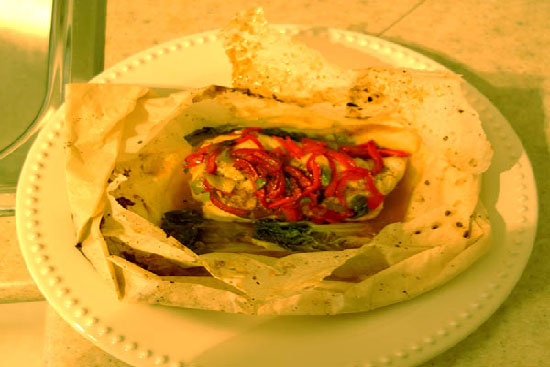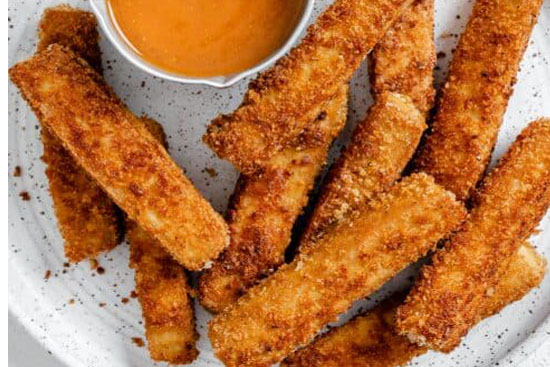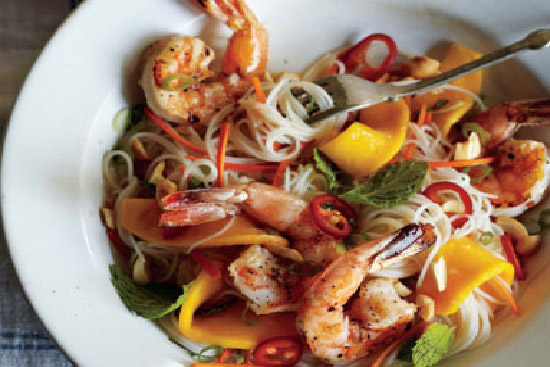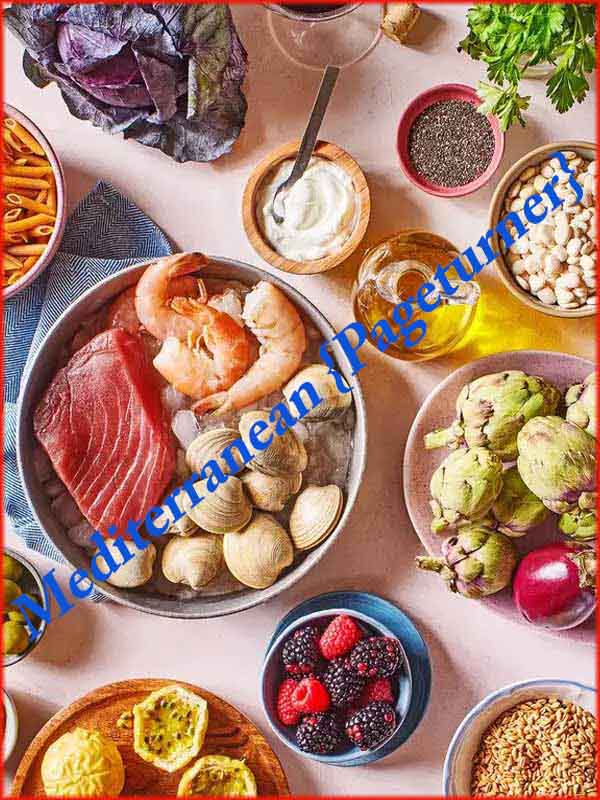
The {Page-Turner-Cookbook} featuring
indonesia Is My Kitchen
INDONESIA Breakfast Appetizers & Soups
INDONESIA Main Dishes
liquid Measures
Weight & temperature Measures
non-liquid ingredients
Top 5 countries
Last Page
Asian-style halibut in parchment
Beef satay
Broiled fillets of salmon with ginger cream
Sesame tofu fingers
Tempeh and mushroom bourguignon
Thai pasta salad with shrimp and vegetables
Beef satay
Broiled fillets of salmon with ginger cream
Sesame tofu fingers
Tempeh and mushroom bourguignon
Thai pasta salad with shrimp and vegetables
Weight & temperature Measures
non-liquid ingredients
Top 5 countries
Last Page
Two foods adored by Indonesians are tempeh – fermented soybeans usually found in block form that are high in protein and fibre – and krupuk, or deep fried crackers, made from prawn, seafood or vegetables, which are eaten at the start of a meal.
With 6,000 islands, there are many regional specialties, but wherever you are in Indonesia, most meals, including breakfast, are based around rice. Literally meaning "fried rice", nasi goreng is considered the national dish . It is a meal of stir-fried rice spiced with kecap manis (sweet soy sauce), shallot, garlic, tamarind and chilli and accompanied by other ingredients, mainly egg, chicken, prawns or salted dried fish.
Some of the intense flavour in Indonesian food comes from very sweet and sour ingredients – such as the thick sweet soy sauce called kecap manis, which is used in countless dishes. The sour notes in the cuisine come from tamarind and lime and the aromatics from shallots, ginger, galangal, pandan, turmeric, lemongrass and lime leaves.
With 6,000 islands, there are many regional specialties, but wherever you are in Indonesia, most meals, including breakfast, are based around rice. Literally meaning "fried rice", nasi goreng is considered the national dish . It is a meal of stir-fried rice spiced with kecap manis (sweet soy sauce), shallot, garlic, tamarind and chilli and accompanied by other ingredients, mainly egg, chicken, prawns or salted dried fish.
Some of the intense flavour in Indonesian food comes from very sweet and sour ingredients – such as the thick sweet soy sauce called kecap manis, which is used in countless dishes. The sour notes in the cuisine come from tamarind and lime and the aromatics from shallots, ginger, galangal, pandan, turmeric, lemongrass and lime leaves.
Main Asian-style halibut in parchment 

A flavorful simple easy recipe
Serves: 4
1 red bell pepper, thinly sliced lengthwise
4 6-ounce halibut fillets
1/2 teaspoon black pepper
3 scallions (white and green parts), thinly sliced on a diagonal
zest from 1/2 orange
3 tablespoons low-sodium soy sauce
3 tablespoons rice vinegar
2 tablespoons sesame oil
1 tablespoon grated ginger root
Cooked brown rice
Serves: 4
Preparation time:15 minutes
Cooking time:15 minutes
4 baby bok choy, ends trimmed1 red bell pepper, thinly sliced lengthwise
4 6-ounce halibut fillets
1/2 teaspoon black pepper
3 scallions (white and green parts), thinly sliced on a diagonal
zest from 1/2 orange
3 tablespoons low-sodium soy sauce
3 tablespoons rice vinegar
2 tablespoons sesame oil
1 tablespoon grated ginger root
Cooked brown rice
Heat oven to 400° F.
Prepare four 15-inch squares of parchment paper or aluminum foil and arrange on 2 baking sheets.
Cook the bok choy in boiling water for 5-6 minutes.
Cut the bok choy in quarters lengthwise. Divide bok choy and bell pepper evenly among the squares, place the halibut fillets on top, sprinkle with black pepper, and top with the scallions and zest.
In a small bowl, combine the soy sauce, vinegar, oil, and ginger. Spoon half of the mixture evenly over the halibut.
Top each fillet with another square of parchment or foil and fold the edges over several times to seal. Bake for 15 minutes.
Transfer each packet to a plate. Slit open the package Being careful of the steam that will escape.
Serve with brown rice and remaining sauce.
Prepare four 15-inch squares of parchment paper or aluminum foil and arrange on 2 baking sheets.
Cook the bok choy in boiling water for 5-6 minutes.
Cut the bok choy in quarters lengthwise. Divide bok choy and bell pepper evenly among the squares, place the halibut fillets on top, sprinkle with black pepper, and top with the scallions and zest.
In a small bowl, combine the soy sauce, vinegar, oil, and ginger. Spoon half of the mixture evenly over the halibut.
Top each fillet with another square of parchment or foil and fold the edges over several times to seal. Bake for 15 minutes.
Transfer each packet to a plate. Slit open the package Being careful of the steam that will escape.
Serve with brown rice and remaining sauce.
Main Beef satay 
Satays, skewers of seasoned meat that are easy to prepare and quick to cook, are ideal for warm-weather dining and out door grilling.
Satays are the Indonesian version of shish kebab that does not have alternate layers of vegetables.
They can be made with almost any meat, poultry or seafood. This seasoned dish is often served with a spicy and sweet sauce made of ground peanuts and peanut butter.
Serves: 4
3 2-inch pieces lemon grass
1 piece lemon rind
1/2 cup finely chopped onion
2 tablespoons soy sauce, preferably ketjap manis, a sweet soy sauce
2 tablespoons vegetable oil
1/2 teaspoon shrimp paste (optional)
1/4 teaspoon ground cumin
1/2 teaspoon ground coriander
1/2 teaspoon ground turmeric
To taste salt
1/2 teaspoon sugar
PEANUT SAUCE FOR SATAYS
2 tablespoons corn or peanut oil
1 teaspoon minced garlic
1 tablespoons finely chopped onion
1/2 teaspoon dried crushed red pepper flakes
1 tablespoon grated ginger
1/4 teaspoon shrimp paste
3 tablespoons tamarind liquid
1 1/2 tablespoons sugar
1 cup peanut butter
1 tablespoon lemon or lime juice
1 1/4 cups boiling water
Serves: 4
Preparation time: 25 minutes
Cooking time:20 minutes
1 lb flank steak 3 2-inch pieces lemon grass
1 piece lemon rind
1/2 cup finely chopped onion
2 tablespoons soy sauce, preferably ketjap manis, a sweet soy sauce
2 tablespoons vegetable oil
1/2 teaspoon shrimp paste (optional)
1/4 teaspoon ground cumin
1/2 teaspoon ground coriander
1/2 teaspoon ground turmeric
To taste salt
1/2 teaspoon sugar
PEANUT SAUCE FOR SATAYS
2 tablespoons corn or peanut oil
1 teaspoon minced garlic
1 tablespoons finely chopped onion
1/2 teaspoon dried crushed red pepper flakes
1 tablespoon grated ginger
1/4 teaspoon shrimp paste
3 tablespoons tamarind liquid
1 1/2 tablespoons sugar
1 cup peanut butter
1 tablespoon lemon or lime juice
1 1/4 cups boiling water
Cut the steak into one-inch cubes and put them in a mixing bowl. Add the lemon grass and lemon rind. Put the onion, soy sauce, oil, shrimp paste, cumin, coriander, turmeric, salt and sugar in the container of a food processor or blender, and blend to a fine paste.
Pour this over the meat and blend well. Let stand one hour. Light and heat the grill.
Arrange equal portions of the meat on each of eight wooden skewers that have been pre soaked in cold water. Place the meat on the grill and cook about two minutes.
Turn and cook about two minutes on the other side. Serve with peanut sauce.
The sauce:
Heat the oil in a saucepan, and add the garlic and onion. Cook stirring over low heat for 2 to 3 minutes.
Add the pepper flakes. Ginger, shrimp paste, tamarind liquid, sugar, peanut butter, and lemon or lime.
Whisk in the boiling water. When blended, remove from heat.
If the sauce starts to curdle, add a little more water.
Pour this over the meat and blend well. Let stand one hour. Light and heat the grill.
Arrange equal portions of the meat on each of eight wooden skewers that have been pre soaked in cold water. Place the meat on the grill and cook about two minutes.
Turn and cook about two minutes on the other side. Serve with peanut sauce.
The sauce:
Heat the oil in a saucepan, and add the garlic and onion. Cook stirring over low heat for 2 to 3 minutes.
Add the pepper flakes. Ginger, shrimp paste, tamarind liquid, sugar, peanut butter, and lemon or lime.
Whisk in the boiling water. When blended, remove from heat.
If the sauce starts to curdle, add a little more water.
Main Broiled fillets of salmon with ginger cream 
The broiled salmon fillets are served with a creamy and tangy ginger sauce. Salmon steaks can also be used with this recipe.
Serves: 6
1 tablespoon vegetable oil
to taste, salt, ground black pepper
2 cups fish stock
1 cup dry white wine
2 tablespoons shallots, chopped
1 cup heavy cream
2 tablespoons fresh ginger, grated
2 ounces butter
2 tablespoons fresh ginger, peeled cut into fine strips
2 tablespoons fresh chives, cut into 1/2-inch sticks
1/2 teaspoon paprika
Serves: 6
Preparation time: 20 minutes
Cooking time:30 minutes
6 6-ounces salmon fillets, with the skin 1 tablespoon vegetable oil
to taste, salt, ground black pepper
2 cups fish stock
1 cup dry white wine
2 tablespoons shallots, chopped
1 cup heavy cream
2 tablespoons fresh ginger, grated
2 ounces butter
2 tablespoons fresh ginger, peeled cut into fine strips
2 tablespoons fresh chives, cut into 1/2-inch sticks
1/2 teaspoon paprika
For the sauce:
In a large saucepan, combine the fish stock, white wine, and shallots. Bring to a boil and reduce the liquid by half. Add the heavy cream and the grated ginger. Bring the liquid back to a boil. Continue to reduce by half or until lightly thickened.
Strain the sauce through a fine strainer. Whisk in the butter, a few bits at the time. Set the sauce aside, and keep in a warm place.
Preheat the broiler. Wash the salmon fillets in cold water. Pat dry. Arrange side by side skin side up in an oiled oven-proof dish. Season with salt and pepper. Place the salmon under the broiler, 4 inches from the source of heat.
Broil for 10 to 12 minutes until the skin is crisp and the flesh is opaque.
PRESENTATION
Cover the bottom of 6 hot plates with some of the hot ginger sauce. Arrange a piece of salmon in the center of each plate. Sprinkle the salmon with strips of ginger and chives. Pour remaining sauce over the fish. Dust with paprika. Serve hot.
In a large saucepan, combine the fish stock, white wine, and shallots. Bring to a boil and reduce the liquid by half. Add the heavy cream and the grated ginger. Bring the liquid back to a boil. Continue to reduce by half or until lightly thickened.
Strain the sauce through a fine strainer. Whisk in the butter, a few bits at the time. Set the sauce aside, and keep in a warm place.
Preheat the broiler. Wash the salmon fillets in cold water. Pat dry. Arrange side by side skin side up in an oiled oven-proof dish. Season with salt and pepper. Place the salmon under the broiler, 4 inches from the source of heat.
Broil for 10 to 12 minutes until the skin is crisp and the flesh is opaque.
PRESENTATION
Cover the bottom of 6 hot plates with some of the hot ginger sauce. Arrange a piece of salmon in the center of each plate. Sprinkle the salmon with strips of ginger and chives. Pour remaining sauce over the fish. Dust with paprika. Serve hot.
Main Sesame tofu fingers 

Serves: 4
Preparation time:20 minutes
Cooking time:12 minutes
Tofu Fingers:1 Block (15oz.) extra firm tofu, pressed
1 Tablespoon soy sauce
2 Teaspoons rice wine vinegar
1 Teaspoon agave syrup
1/2 Teaspoon sriracha
1/4 Cup cornstarch
Sesame Sauce:
1/4 Cup soy sauce
1/4 Cup tomato sauce
3 Tablespoons agave syrup
1 Teaspoon sriracha
1/2 Teaspoon rice wine vinegar
1 Tablespoon sesame seeds
1 Teaspoon cornstarch
1 Teaspoon water
Press the block of tofu to get as much liquid out of the tofu as possible.
Cut the block of tofu into "fingers".
In a large bowl, whisk together the 1 tablespoon of soy sauce, the 2 teaspoons of rice wine vinegar, the 1 teaspoon of agave, and 1/2 teaspoon of sriracha.
Add the tofu fingers to the bowl with the marinade and toss to coat all of the tofu for about 15-20 minutes.
Add the tofu fingers to a large 'ziploc' bag, and sprinkle the cornstarch into the bag. Seal the bag and toss the tofu. Coat all of the fingers in the cornstarch.
Heat a cast-iron or non-stick frying over medium heat. Cover the bottom of pan with a film oh cooking oil. Brown the tofu one both sides.
Make the sesame sauce:
In a small sauce pan, whisk together the soy sauce, tomato sauce, agave, sriracha, rice wine vinegar and sesame seeds.
Heat on medium low, bring to a simmer, reduce heat to low and simmer for about 5 minutes.
Whisk together the cornstarch and water in a small bowl. Then add that to the sauce, whisk to combine.
Continue to simmer the sauce until it is thick.
When the tofu fingers are brown and crispy, add them to a bowl and pour the sauce over them. Toss to coat and serve
Cut the block of tofu into "fingers".
In a large bowl, whisk together the 1 tablespoon of soy sauce, the 2 teaspoons of rice wine vinegar, the 1 teaspoon of agave, and 1/2 teaspoon of sriracha.
Add the tofu fingers to the bowl with the marinade and toss to coat all of the tofu for about 15-20 minutes.
Add the tofu fingers to a large 'ziploc' bag, and sprinkle the cornstarch into the bag. Seal the bag and toss the tofu. Coat all of the fingers in the cornstarch.
Heat a cast-iron or non-stick frying over medium heat. Cover the bottom of pan with a film oh cooking oil. Brown the tofu one both sides.
Make the sesame sauce:
In a small sauce pan, whisk together the soy sauce, tomato sauce, agave, sriracha, rice wine vinegar and sesame seeds.
Heat on medium low, bring to a simmer, reduce heat to low and simmer for about 5 minutes.
Whisk together the cornstarch and water in a small bowl. Then add that to the sauce, whisk to combine.
Continue to simmer the sauce until it is thick.
When the tofu fingers are brown and crispy, add them to a bowl and pour the sauce over them. Toss to coat and serve
Main Tempeh and mushroom bourguignon 

The iconic beef stew becomes plant-based with a trio of fungi and tempeh, a protein-rich cake of fermented soybeans originally from Indonesia.
Serves: 5
1/2 oz (15 g) dried porcini mushrooms
2 lbs (905 g) small to medium cremini mushrooms
1/4 cup plus 1 tbsp (60 mL plus 15 mL) olive oil, divided
Salt and freshly ground pepper to taste
2 tbsp (30 mL) unsalted butter
8 large shallots, about 3/4 lb (340 g), peeled and halved through root ends
3 cloves garlic, thinly sliced
1 tbsp (15 mL) chopped thyme
1 tbsp (15 mL) tomato paste
2 tbsp (30 mL) all-purpose flour
1 cup (250 mL) dry fruity red wine
1 (150 g) package hon shimeji mushrooms, trimmed, separated
1 large carrot, about 8 oz (225 g), peeled and sliced 1/3 inch (8 mm) thick
1 bay leaf
1 (250 g) package plain tempeh, cubed
Chopped parsley for garnish
Mashed potatoes or buttered egg noodles for serving
Serves: 5
Preparation time:30 minutes
Cooking time:1 hour
2 cups (500 mL) vegetable or mushroom stock1/2 oz (15 g) dried porcini mushrooms
2 lbs (905 g) small to medium cremini mushrooms
1/4 cup plus 1 tbsp (60 mL plus 15 mL) olive oil, divided
Salt and freshly ground pepper to taste
2 tbsp (30 mL) unsalted butter
8 large shallots, about 3/4 lb (340 g), peeled and halved through root ends
3 cloves garlic, thinly sliced
1 tbsp (15 mL) chopped thyme
1 tbsp (15 mL) tomato paste
2 tbsp (30 mL) all-purpose flour
1 cup (250 mL) dry fruity red wine
1 (150 g) package hon shimeji mushrooms, trimmed, separated
1 large carrot, about 8 oz (225 g), peeled and sliced 1/3 inch (8 mm) thick
1 bay leaf
1 (250 g) package plain tempeh, cubed
Chopped parsley for garnish
Mashed potatoes or buttered egg noodles for serving
1. In a small saucepan, heat stock until hot. Remove from heat and stir in porcini. Soak for 20 minutes. Remove porcini and squeeze dry. Place in a sieve and rinse. Drain, dry, coarsely chop and set aside. Slowly pour soaking liquid into a bowl, leaving any sediment behind. Set aside.
2. Preheat oven to 425°F (218°C). Line a baking sheet with parchment paper.
3. In a large mixing bowl, toss cremini mushrooms with 1/4 cup (60 mL) oil, salt and pepper. Transfer to prepared sheet. Bake on the bottom rack of the oven until browned and tender, about 25 minutes. Remove from oven.
4. In a large heavy-duty pot, heat the remaining 1 tbsp (15 mL) oil and butter over medium-high heat. Add shallots, cut-sides down. Cook until deeply browned, about 5 minutes. Reduce heat to medium-low and flip shallots. Cook for 2 minutes. Add garlic and thyme. Cook, stirring, for 1 minute. Add tomato paste. Cook, stirring, for 1 minute. Sprinkle in flour. Cook, stirring, for 1 minute. Add wine and porcini soaking liquid, stirring up any brown bits. Raise heat to high. When it comes to a boil, add porcini, roasted cremini mushrooms, hon shimeji, carrot and bay leaf. When it returns to a boil, partially cover and reduce heat to maintain a gentle simmer. Cook, stirring occasionally, until carrots and shallots are soft, about 20 minutes. Stir in tempeh. Cook until it just heats through, about 2 minutes. Taste sauce for salt.
5. Sprinkle with parsley. Serve with noodles or mashed potatoes.
2. Preheat oven to 425°F (218°C). Line a baking sheet with parchment paper.
3. In a large mixing bowl, toss cremini mushrooms with 1/4 cup (60 mL) oil, salt and pepper. Transfer to prepared sheet. Bake on the bottom rack of the oven until browned and tender, about 25 minutes. Remove from oven.
4. In a large heavy-duty pot, heat the remaining 1 tbsp (15 mL) oil and butter over medium-high heat. Add shallots, cut-sides down. Cook until deeply browned, about 5 minutes. Reduce heat to medium-low and flip shallots. Cook for 2 minutes. Add garlic and thyme. Cook, stirring, for 1 minute. Add tomato paste. Cook, stirring, for 1 minute. Sprinkle in flour. Cook, stirring, for 1 minute. Add wine and porcini soaking liquid, stirring up any brown bits. Raise heat to high. When it comes to a boil, add porcini, roasted cremini mushrooms, hon shimeji, carrot and bay leaf. When it returns to a boil, partially cover and reduce heat to maintain a gentle simmer. Cook, stirring occasionally, until carrots and shallots are soft, about 20 minutes. Stir in tempeh. Cook until it just heats through, about 2 minutes. Taste sauce for salt.
5. Sprinkle with parsley. Serve with noodles or mashed potatoes.
Main Thai pasta salad with shrimp and vegetables 

Serves: 3
Preparation time: 20 minutes
Cooking time:15 minutes
10 - 12 oz. (400-450 g) fresh Asian-style noodles OR fettuccine-style noodles1 cup small cooked shrimp, thawed and drained if frozen
1 zucchini, grated with a wide grater or peeled into thin strips with a vegetable peeler
1 tomato, cut into small pieces
1 red or green chili, de-seeded and thinly sliced
1 red and 1 green bell pepper, de-seeded and cut into strips
3 spring (green) onions, sliced
1 cup fresh coriander/cilantro, lightly chopped
1/2 cup fresh basil, lightly chopped
1/3 cup dry roasted peanuts or cashews, unsalted, and left whole or lightly chopped
SALAD DRESSING:
1/3 cup lime juice (about 2 limes, juiced)
4 Tbsp. fish sauce (available at Asian/Chinese stores)
2 Tbsp. soy sauce
2-3 tsp. sugar (adjust to taste)
1-3 tsp. chili sauce OR 1/4 to 1/2 tsp. cayenne pepper OR crushed chili (adjust to taste)
2 cloves garlic, minced
Prepare noodles according to the directions on the package. Rinse noodles with cold water, drain, and set aside.
Prepare salad dressing by mixing all dressing ingredients together in a cup or small bowl until sugar dissolves. Taste-test for sour/sweetness, adding more sugar as desired. Note that the taste of the dressing will be milder when distributed among the noodles.
Prepare the vegetables and shrimp, and place them in a very large salad or mixing bowl. Add the herbs and nuts. Stir the dressing once more and pour over, tossing well to mix.
Now add the noodles and toss again Once well-tossed, taste-test the noodles, adding more fish sauce if not salty or tasty enough.
You can serve this salad immediately, or cover and place in the refrigerator until ready to eat (this salad will keep for up to 3 days, and makes great workday lunches!).
Garnish with a few extra sprigs of the fresh herbs, plus some chopped peanuts. For extra spicy, Thai chili sauce can be served on the side, either store-bought or my own.
Prepare salad dressing by mixing all dressing ingredients together in a cup or small bowl until sugar dissolves. Taste-test for sour/sweetness, adding more sugar as desired. Note that the taste of the dressing will be milder when distributed among the noodles.
Prepare the vegetables and shrimp, and place them in a very large salad or mixing bowl. Add the herbs and nuts. Stir the dressing once more and pour over, tossing well to mix.
Now add the noodles and toss again Once well-tossed, taste-test the noodles, adding more fish sauce if not salty or tasty enough.
You can serve this salad immediately, or cover and place in the refrigerator until ready to eat (this salad will keep for up to 3 days, and makes great workday lunches!).
Garnish with a few extra sprigs of the fresh herbs, plus some chopped peanuts. For extra spicy, Thai chili sauce can be served on the side, either store-bought or my own.
conversion of liquids
Weights
Temperatures
Measures of non liquid ingredients
Non-liquid ingredients in volume converted
|
|||||||
|---|---|---|---|---|---|---|---|
Ingredient |
1 cup |
3/4 cup |
2/3 cup |
1/2 cup |
1/3 cup |
1/4 cup |
2 tablespoons |
| All-purpose wheat flour | 120 g | 90 g | 80 g | 60 g | 40 g | 30 g | 15 g |
| All-purpose sifted wheat flour | 110 g | 80 g | 70 g | 55 g | 35 g | 27 g | 13 g |
| White sugar | 200 g | 150 g | 130 g | 100 g | 65 g | 50 g | 25 g |
| Powdered sugar/Icing sugar | 100 g | 75 g | 70 g | 50 g | 35 g | 25 g | 13 g |
| Brown sugar normally packed | 180 g | 135 g | 120 g | 90 g | 60 g | 45 g | 23 g |
| Corn flour | 160 g | 120 g | 100 g | 80 g | 50 g | 40 g | 20 g |
| Cornstarch | 120 g | 90 g | 80 g | 60 g | 40 g | 30 g | 15 g |
| Rice (not-cooked) | 190 g | 140 g | 125 g | 95 g | 65 g | 48 g | 24 g |
| Macaroni (uncooked) | 140 g | 100 g | 90 g | 70 g | 45 g | 35 g | 17 g |
| Couscous (uncooked) | 180 g | 135 g | 120 g | 90 g | 60 g | 45 g | 22 g |
| Quick oatmeal (uncooked) | 90 g | 65 g | 60 g | 45 g | 30 g | 22 g | 11 g |
| Table salt | 300 g | 230 g | 200 g | 150 g | 100 g | 75 g | 40 g |
| Butter / Margarine | 240 g | 180 g | 160 g | 120 g | 80 g | 60 g | 30 g |
| Shortening | 190 g | 140 g | 125 g | 95 g | 65 g | 48 g | 24 g |
| Fruits and légumes chopped | 150 g | 110 g | 100 g | 75 g | 50 g | 40 g | 20 g |
| chopped walnuts | 150 g | 110 g | 100 g | 75 g | 50 g | 40 g | 20 g |
| Nuts /ground almonds | 120 g | 90 g | 80 g | 60 g | 40 g | 30 g | 15 g |
| Fresh bread crumbs (not packed) | 60 g | 45 g | 40 g | 30 g | 20 g | 15 g | 8 g |
| Dry bread crumbs | 150 g | 110 g | 100 g | 75 g | 50 g | 40 g | 20 g |
| Parmesan grated | 90 g | 65 g | 60 g | 45 g | 30 g | 22 g | 11 g |
| Chocolate chips | 150 g | 110 g | 100 g | 75 g | 50 g | 38 g | 19 g |


As the sun rises or sets in
INDONESIA
"May every sunrise hold more promise, and every sunset hold more peace."
The {Page Turner} E-Cookbooks
Library on a world cooking journey
6 Recipes
6 Main dishes
Loading
ecookbook 6 Recipes










